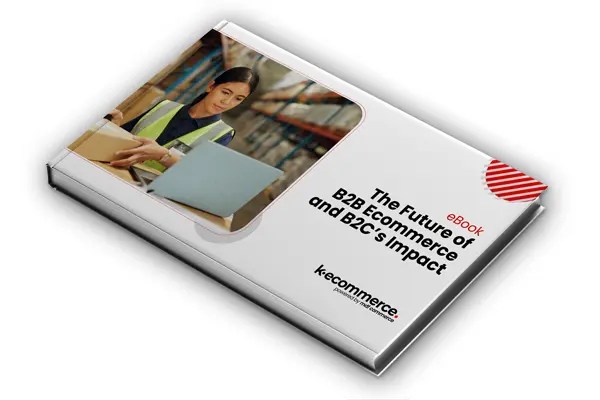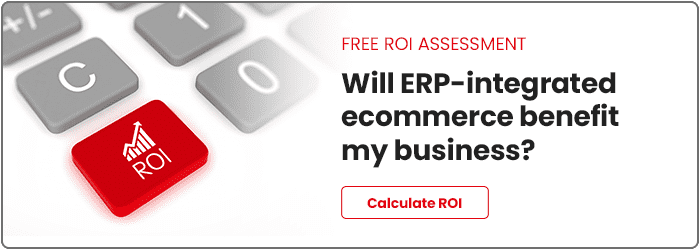
What Is Ecommerce TCO and How Does It Help Your Business?

Marketing Team
k-ecommerce
Introduction
Managing costs is vital in running an ecommerce business. To do so effectively, you need a clear understanding of all the expenses involved in your business, whether direct or indirect, future or past. That’s where the total cost of ownership plays a role.
Knowing the total cost of ownership (TCO) gives you a high-level overview of your costs, which is critical for making informed decisions. In this post, we’ll explore how businesses can determine the TCO of their ecommerce platform.
Here’s what we’ll cover:
- What Is Total Cost of Ownership?
- Why Total Cost of Ownership Is Important in Ecommerce
- How Is Total Cost of Ownership Calculated?
- How To Use Your TCO Calculation
- Final Thoughts: How To Determine Total Cost of Ownership in Ecommerce
What Is Total Cost of Ownership?
The total cost of ownership (TCO) is an estimate of all the costs involved in purchasing and using an asset. This estimate is an essential metric for almost any type of business because it looks not only at the initial purchase cost but your ongoing costs.
Within the context of the ecommerce business, a TCO estimate considers all the direct and indirect costs associated with owning and operating an ecommerce platform, including upfront costs, ongoing expenses, and potential hidden costs.
A TCO estimate is crucial for new ecommerce business owners making a purchasing decision on a platform for their business or those considering replatforming.
Why Total Cost of Ownership Is Important in Ecommerce
The Total Cost of Ownership provides a high-level overview of all the expenses associated with your business. This kind of financial awareness is necessary for making business decisions at management levels. For example, the TCO estimate can help justify your choice of ecommerce platforms.
Ecommerce TCO helps highlight and calculate your:
- Return on investment (ROI)
- Return on time invested (ROTI)
- Hidden Costs
Both ROI and ROTI are necessary for determining how profitable a business venture is. ROI and ROTI highlight how much you get back from your investment so you can see how profitable a business venture is.
TCO calculations also reveal the hidden costs that your business needs to keep running. These are things you may not have considered if you were only calculating upfront costs, and ignoring them can really hamper business growth.
Rather than relying on just the upfront costs that come from the purchase and setup of your platform, TCO also considers the longer-term operational costs that occur during the lifetime of your online store.
How Is Total Cost of Ownership Calculated?
Ecommerce TCO is calculated by adding your initial costs and ongoing costs. To get a proper estimate of the total cost of ownership for your ecommerce business, you need to calculate the following costs:
- Upfront Costs
- Ongoing Expenses
- Hidden Costs
Upfront Costs
The upfront costs are the initial investments that you make when you want to implement an ecommerce platform. These costs are also referred to as capital expenditures.
Upfront costs for an ecommerce store usually include the following:
- Platform licensing fees: Most ecommerce software vendors have licensing fees that customers must pay to use their platform. The pricing of these fees can vary based on the included modules or the type of support you choose.
- Implementation/Customization costs: These are the expenses of converting a stock ecommerce solution into an ecommerce website that meets your requirements. This may include the cost of installing the solution on your hosting servers, initial setup for the website frontend and backend, integrating payment gateways, integrating your ecommerce to your ERP, and optimizing the store user experience.
- Development costs: If you choose to go with a closed-source software as a service (SaaS) platform, like k-ecommerce, for your ecommerce store, then you may not need to include development costs in your TCO estimate. However, with open-source solutions like WooCommerce or Magento, there may be costs associated with getting developers to modify the platform. This could mean hiring in-house developers or outsourcing the development work to an agency.
- Additional costs: Domain name purchases, payment for a web hosting package, data entry, marketing fees for the launch, content delivery networks, and security software subscription fees are all additional costs. Some of these costs may be recurring as well. They are all required for the initial stage of your ecommerce business.
Ongoing Expenses
Also known as operating expenses, these are the recurring expenses that come with operating your ecommerce platform.
Some of the items that were a part of the initial costs may also show up here as renewal costs. These include renewals for platform licenses and infrastructure maintenance costs (domain name registration, website hosting costs, server maintenance, backups, security, bandwidth, and data storage upgrades).
There may also be some new costs that pop up here, like:
- Platform maintenance fees: Ecommerce platform vendors may charge for customer support, bug fixes, new features, and feature updates.
- Scaling costs: Your platform may require a fee when your ecommerce site experiences a sudden internet traffic spike, and you have to increase server and bandwidth capacity to handle the load.
- Marketing fees: Keeping current customers coming back and attracting new customers often costs money. These fees include costs for online advertising on platforms like Google Ads, search engine optimization (SEO), content generation and copywriting, social media, and traditional marketing.
- Payment processing and transaction fees: Some vendors may add a charge for each transaction a customer carries out on your website. Payment processors like Stripe and PayPal can also include a transaction fee.
Hidden Costs
Some business expenses are not as obvious as others, but they are just as important. These can be either upfront or ongoing costs. You can arrive at a more accurate TCO value by identifying these hidden costs associated with ecommerce platform ownership.
Some examples of hidden costs include:
- Third-party Integration and API usage fees: Some of the features that enhance the customer experience on your ecommerce website require APIs from third-party services, and integrating them can come at a cost. For example, integrating Google’s Address Validation APIs into the checkout process improves the customer experience but can become costly as more people use it during the checkout process.
- Team Training and Expansions: As your ecommerce store grows, your operations team may need to expand to deal with the growth. This will mean hiring and training more developers, customer support personnel, accountants, and other roles required for things to run smoothly.
- Regulation and Compliance Costs: These are fees and expenses involved with meeting and maintaining industry or regional regulatory requirements. These include compliance with standards like PCI-DSS and GDPR.
Some hidden costs cannot be itemized but still need to be budgeted for. You can factor in these costs by using a percentage of your total ongoing costs to represent them.
How To Use Your TCO Calculation
By estimating your TCO three to five years in advance, you should have enough data to evaluate ROI and determine if you need to replatform.
Evaluate ROI
By evaluating the potential ROI of an ecommerce project, businesses can determine whether the investment is worth pursuing.
To evaluate your ROI, in addition to your TCO analysis, you also need to identify key performance indicators (KPIs) for the ecommerce platform. The KPIs measure performance over time for specific activities in your business. These can include conversion rates, average order value, average profit margin, and customer acquisition costs.
You also need to estimate the potential revenue generated by the ecommerce platform over time. Compare the estimated revenue against the TCO to calculate the potential ROI of the ecommerce project.
Partnering with a platform specializing in ecommerce like k-ecommerce can help you improve ROI by giving you tools to upsell, cross-sell, and remarket at every point of contact, all without needing the intervention of a single customer service or sales representative on your staff.
Evaluate the return on investment with a solution like K.ecom.
Determine When to Replatform
Sometimes, replatforming is better than staying with a costly solution. Your TCO can also help you consider the cost of maintaining an existing ecommerce platform versus replatforming to a new solution.
You can calculate the TCOs for your platform alternatives while also evaluating the potential benefits of replatforming, such as improved functionality and better scalability.
When considering a switch to a new platform, factors such as vendor support, platform security, and data migration need to be considered.
Final Thoughts: How To Determine Total Cost of Ownership in Ecommerce
Determining the total cost of ownership for an ecommerce platform is essential for businesses looking to make informed decisions about their digital ecommerce strategy. By considering upfront costs, ongoing expenses, and potential hidden costs, businesses can better understand the total cost of ownership for an ecommerce platform.
Ultimately, this can help businesses make better decisions about which platform to choose, how to allocate resources, and how to maximize their ecommerce ROI.
When choosing an ecommerce solution, k-ecommerce offers a compelling option for businesses looking to minimize TCO and maximize ROI. With no additional maintenance, upgrade, or support fees, businesses can rest assured that their costs will remain predictable over time.
With an all-in-one solution, k-ecommerce takes care of everything from hosting to payment security and is built with industry best practices and standards in mind. For SMBs looking to simplify their ecommerce operations, k-ecommerce is a strong contender.
Get in touch today to learn more about k-ecommerce solutions.



